|
|
|
Extinct BirdsJulian P. Hume
Poyser Monographs
Featherstone Education
2nd edition
2017
"Extinct Birds was the first comprehensive review of the hundreds of the bird species and subspecies that have become extinct over the last 1,000 years of habitat degradation, over-hunting and rat introduction. It has become the standard text on this subject, covering both familiar icons of extinction as well as more obscure birds, some known from just one specimen or from travellers’ tales. This second edition is expanded to include dozens of new species, as more are constantly added to the list, either through extinction or through new subfossil discoveries. Extinct Birds is the result of decades of research into literature and museum drawers, as well as caves and subfossil deposits, which often reveal birds long-gone that disappeared without ever being recorded by scientists while they lived. From Greak Auks, Carolina Parakeets and Dodos to the amazing yet almost completely vanished bird radiations of Hawaii and New Zealand via rafts of extinction in the Pacific and elsewhere, this book is both a sumptuous reference and astounding testament to humanities devastating impact on wildlife."
|
Buy from amazon.co.uk 
|
|
Flock Together: A Love Affair with Extinct BirdsB.J. Hollers
University Of Nebraska Press
2017
"After stumbling upon a book of photographs depicting extinct animals, B.J. Hollars became fascinated by the creatures that are no longer with us; specifically, extinct North American birds. How, he wondered, could we preserve so beautifully on film what we've failed to preserve in life? And so begins his yearlong journey to find out, one that leads him from bogs to art museums, from archives to Christmas Counts, until he at last comes as close to extinct birds as he ever will during a behind-the-scenes visit at the Chicago Field Museum. Heartbroken by the birds we've lost, Hollars takes refuge in those that remain. Armed with binoculars, a field guide, and knowledgeable friends, he begins his transition from budding birder to environmentally conscious citizen, a first step on a longer journey toward understanding the true tragedy of a bird's song silenced forever."
|
Buy from amazon.co.uk 
|
|
Vanished and Vanishing Parrots: Profiling Extinct and Endangered SpeciesJoseph M. Forshaw
Illustrations: Frank Knight
CSIRO
2017
"Joseph M. Forshaw, one of the world’s leading authorities on parrots, calls attention to the threats they face: they are one of the most endangered groups of birds, with a growing number of species nearing extinction. The main threats arise from habitat loss through deforestation and agricultural development and from the taking of birds for the international live-bird trade. Vanished and Vanishing Parrots brings together information on species that have become extinct in historical times with information on species that are in danger of becoming extinct to increase public awareness of the plight of these magnificent birds. Vivid colour plates by the wildlife artist Frank Knight draw attention to the spectacular species that we have lost or that could be lost. Forshaw’s work gives us fascinating insight into these endangered and extinct parrots."
|
Buy from amazon.co.uk 
|
|
Extinct Birds of Hawai'iMichael Walther
Illustrations: Julian P. Hume
Mutual Publishing
2016
"Extinct Birds of Hawaii captures the vanishing world of unique bird species that has slipped away in the Islands mostly due to human frivolity and unconcern. Richly illustrated, including paintings by Julian P. Hume (many painted specifically for Extinct Birds of Hawai'i), it enables us to vicariously enjoy avian life unique to Hawai'i that exists no longer. Extinct Birds of Hawai'i also sends a powerful message: Although Hawaii is well-known for its unique scenic beauty and its fascinating native flora, fauna, bird and marine life, it is also called the extinction capital of the world. The Islands' seventy-seven bird species and sub-species extinctions account for approximately fifteen percent of global bird extinctions during the last 700 years. On some islands over 80 percent of the original land bird species are now extinct. With the many agents of extinction still operating in the Islands' forests, Hawai'i's remaining native land birds are at a high risk of being lost forever. Many birdwatchers, nature lovers, and eco-tourists are unaware of the tremendous loss of species that has occurred in this remote archipelago. Extinct Birds of Hawai'i, shows the bird life that has been lost and calls attention to the urgent need for preservation action."
|
Buy from amazon.co.uk 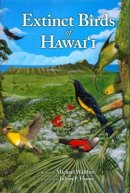
|
|
Flight Ways: Life And Loss At The Edge Of ExtinctionThom Van Dooren
Columbia University Press
2016
"A leading figure in the emerging field of extinction studies, Thom van Dooren puts philosophy into conversation with the natural sciences and his ethnographic encounters to vivify the cultural and ethical significance of modern-day extinctions. Unlike other meditations on the subject, Flight Ways incorporates the particularities of real animals and their worlds, drawing philosophers, natural scientists, and general readers into the experience of living among and losing biodiversity.Each chapter of Flight Ways focuses on a different species or group of birds: North Pacific albatrosses, Indian vultures, an endangered colony of penguins in Australia, Hawaiian crows, and the iconic whooping cranes of North America. Written in eloquent and moving prose, the book takes stock of what is lost when a life form disappears from the world-the wide-ranging ramifications that ripple out to implicate a number of human and more-than-human others."
|
Buy from amazon.co.uk 
|
|
A Message from Martha: The Extinction of the Passenger Pigeon and Why it Still MattersMark Avery
Bloomsbury
2014
"September 1st, 2014 marked the centenary of one of the best-documented extinctions in history - the demise of the Passenger Pigeon. From being the commonest bird on the planet 50 years earlier, the species became extinct on that fateful day, with the death in Cincinnati Zoo of Martha - the last of her kind. This book tells the tale of the Passenger Pigeon, and of Martha, and of author Mark Avery's journey in search of them. It looks at how the species was a cornerstone of the now much-diminished ecology of the eastern United States, and how the species went from a population that numbered in the billions to nil in a terrifyingly brief period of time. It also explores the largely untold story of the ecological annihilation of this part of America in the latter half of the 19th century, a time that saw an unprecedented loss of natural beauty and richness as forests were felled and the prairies were ploughed, with wildlife slaughtered more or less indiscriminately. Despite the underlying theme of loss, this book is more than another depressing tale of human greed and ecological stupidity. It contains an underlying message - that we need to re-forge our relationship with the natural world on which we depend, and plan a more sustainable future. Otherwise more species will go the way of the Passenger Pigeon. We should listen to the message from Martha."
|
Buy from amazon.co.uk 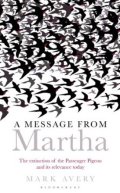
|
|
Ghosts of Gone BirdsChris Aldhous and Ceri Levy
Christopher Helm / Bloomsbury
2013
"It is rare that the birding and art worlds come together. It is even rarer that they bring in some of the greatest artists in the world, along with musicians such as Doves, Gorillaz and Blur. This phenomenon is called Ghosts of Gone Birds.The brief – given to 120 artists – was to produce a piece of work based loosely on one or more extinct birds, with proceeds from sales going to BirdLife International. The results exceeded the curator's wildest dreams – the exhibition in London was a sensation, with the people involved representing a who's who of British art – Sir Peter Blake, Ben Newman, Ralph Steadman, Billy Childlish – along with renowned bird artists such as Bruce Pearson and Carry Akroyd"
|
Buy from amazon.co.uk 
|
|
Extinction: Not the End of the World?Steve Parker
Natural History Museum
2013
"More than 999 of every 1,000 species that have ever lived on the planet have become extinct. As part of evolution, extinction of the old allows emergence of the new. It is integral to the Earth's continually changing range and richness of life-forms. Extinction: not the end of the world? is a highly readable introduction to the causes of extinction, the different types of extinction and how relevant it is to the world today. The book discusses today's key issues, from biodiversity and conservation to the threat of human extinction, as well as exploring the major extinction events of the past and explaining how scientists know all this. Throughout the book there are engaging extinction case studies from around the world showing, for example, how local extinctions such as the large blue butterfly can be reversed. Presenting the latest research in an accessible and engaging way, this is a complete introduction to an important and often complex subject"
|
Buy from amazon.co.uk 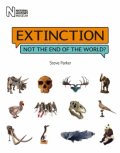
|
|
Extinct BirdsJulian P. Hume & Michael Walters
Poyser
2012
"This is the first comprehensive review of the hundreds of bird species
that have become extinct over the last 1,000 years of habitat
degradation, over-hunting and rat introduction. Covering both familiar
extinct birds and more obscure species, some known from just one
specimen or from traveller's tales, the book also looks at hundreds of
species from the subfossil record - birds that disappeared without ever
being recorded. Julian Hume and Michael Walters recreate these lost
birds in stunning detail, bringing together an up to date review of the
literature for every species. From Great Auks, Carolina Parakeets and
Dodos to the amazing yet completely vanished bird radiations of Hawaii
and New Zealand, via rafts of extinctions in the Pacific and elsewhere,
this book is both a sumptuous reference and a terrifying reminder of
humanity's impact on birds."
|
Buy from amazon.co.uk 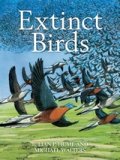
|
|
John Gould's Extinct and Endangered BirdsSue Taylor
National Library of Australia
2012
"In 1838, John Gould, the father of Australian ornithology, visited Australia with the intention of gathering material for his great work on Australian birds. In the resulting publication, The Birds of Australia: In Seven Volumes (1848), and the accompanying Supplement (1869), Gould named, for the first time, no fewer than 32 Australian bird species. Gould's words about the Norfolk Island Kaka were prophetic – the last bird of its kind died in a cage in London in 1851. Since then, a number of other species illustrated in The Birds of Australia have become extinct and others are now facing extinction. John Gould's Extinct and Endangered Birds of Australia features 59 plates of birds from Gould's eight-volume work, birds that today are threatened or that no longer exist. Featuring exquisite full-colour lithographs reproduced from the National Library of Australia's copy of The Birds of Australia, John Gould's Extinct and Endangered Birds gives an insight into the history of each bird's European discovery, as well as its subsequent fortunes or misfortunes."
|
 |
|
Ralph Steadman's Extinct BoidsRalph Steadman
A & C Black
2012
"When Ceri Levy asked Ralph Steadman to produce one piece of art representing an extinct bird for a recent exhibition, Ghosts of Gone Birds, Ralph said 'yes'. Then 'yes' again ... and again ... and again. An astonishing 100 paintings later, Extinct Boids was born. Ralph got carried away by the birds, taking Ceri with him ... this book details the discoveries they made on their travels through the savage seas of extinction. After stumbling on the previously hidden Toadstool Island, where the extinct birds of the world live on in secretive harmony, the duo spent nearly a year in close proximity to a host of fantastical avian creatures. Ralph documents them all in this series of remarkable paintings, featuring unique interpretations of well-known birds such as the Great Auk, Passenger Pigeon and Dodo, along with less familiar members of the feathersome firmament - Snail-eating Coua, for example, or the Red-moustached Fruit Dove - and a variety of bizarre beasts including the Gob Swallow, the Long-legged Shortwing and the Needless Smut. All are captured in a riot of expression and colour, with a slice of trademark Steadman humour. Based on emails, diary entries and phone conversations, Ceri's accompanying text provides a running commentary, detailing the unfolding madness behind the creation of each piece in Ralph's extraordinary work."
|
Buy from amazon.co.uk 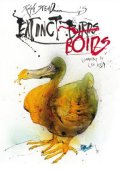
|
|
An Alphataxonomic Revision of Extinct and Extant Razorbills (Aves, Alcidae): A Combined Morphometric and Phylogenetic ApproachEditors: N. Adam Smith and Julia A. Clarke
Ornithological Monographs 72
American Ornithologists' Union
2011
"Alca (Aves, Alcidae) has a comparatively rich fossil record with respect to other Charadriiformes, consisting of thousands of specimens. Despite the abundance of fossil material, species richness in this clade has remained poorly understood, primarily because of the paucity of associated specimens. To address this issue, a combined morphometric and apomorphy-based method was developed that would allow referral of fragmentary and isolated specimens, which constitute ~97% of the Alca fossil record. Measurements of multiple variables from >2000 Alca fossils were categorized by hierarchical cluster analysis and resulted in the recognition of species clusters. Discriminant function analysis was used to assess statistical support for these clusters and to identify the most informative measurements with respect to discriminating between species on the basis of size. The reliability of this method was tested using the same measurements taken from 13 extant alcid species and was found to be robust with respect to the accurate recovery of species-correlated groups of measurement data. With the exception of the similarly proportioned Alca carolinensis sp. nov. and A. olsoni sp. nov., the holotype specimens of all Alca species were recovered in separate, statistically supported clusters. These clusters of fossils were then evaluated for the presence of diagnostic morphological features, resulting in the recognition of three new Alca species. In contrast to previously described Alca species, two new species are described from holotype specimens that are associated partial skeletons. These associated specimens facilitated referral of isolated fossil material and phylogenetic estimation of alca relationships. Amended diagnoses for Alca species are proposed, and 203 humeri are referred to species on the basis of unique suites of characters and size ranges identified through these analyses. This method has potential for assessing species diversity in other taxa known from abundant fragmentary and/or isolated remains. The combined phylogenetic analysis includes the three new species described herein, nine extinct species in Alcini that have not been phylogenetically analyzed before, and six other extant or recently extinct (i.e., great auk [Pinguinus impennis]) Alcini species. The character matrix includes osteological characters and previously published molecular sequence data (ND2, ND5, ND6, CO1, CYTB, 12S, 16S, RAG1). The results support the monophyly of an Alca + Pinguinus clade recovered as the sister taxon to a clade composed of Uria, Miocepphus, and Alle. The description of three new species of auk from the Early Pliocene Yorktown Formation of North Carolina nearly doubles the number of known species in Alca, makes Alca the most speciose clade of Atlantic alcids, and supports previous hypotheses of high species richness in this clade. The sole extant species, the razorbill auk (Alca torda), may accordingly be viewed as the only survivor of a diverse Atlantic Ocean clade that was species-rich a mere 4 million years ago. These new fossils refine our knowledge of alcid paleodiversity, provide information regarding ancestral osteological states within Alca, and allow for increased understanding of radiation, extinction, and biogeography within this clade."
|
Buy from amazon.co.uk 
|
|
The Artist and the Scientists: Bringing Prehistory to LifePeter Trusler, Patricia Vickers-Rich, Thomas H. Rich
Cambridge University Press
2010
Includes chapters on Moas and Mihirungs.
"The Artist and the Scientists: Bringing Prehistory to Life presents the extraordinary lives and works of eminent paleontologists Patricia Vickers-Rich and Tom Rich, and Peter Trusler, one of the finest artists of scientific realism Australia has produced. Over more than thirty years, Patricia, Tom and Peter have travelled across Eastern Europe, Asia, the Americas, Africa, Australia and New Zealand in search of the remains of early life, including fish, dinosaurs, birds and mammals. Their successful expeditions, and the many publications and exquisite artworks that have ensued, are a testament to their scientific methodology, thirst for knowledge and eye for detail. The book follows the development of selected works of art covering the last 600 million years of the geological record. Told from the viewpoints of both scientist and artist, the reader is given a unique insight into the process of preserving and recording the evolution of prehistoric life."
|
Buy from amazon.co.uk 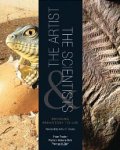
|
|
Glimpses of Paradise: The Quest for the Beautiful ParakeetPenny Olsen
National Library of Australia
2007
"Glimpses of Paradise: The Quest for the Beautiful Parrakeet follows the story of the Paradise Parrot, beginning in 1844, when John Gilbert spotted it on the Condamine River in Queensland. Gilbert wrote to his employer John Gould, in London, describing his find as 'without exception the most beautiful of the whole tribe I have ever seen in Australia'. Gould named it the Beautiful Parrakeet. But squatters had already begun to claim the parrot's country and by the 1890s the parakeet had disappeared from the record. Ornithologist and journalist Alec Chisholm believed that the bird, then known as the Paradise Parrot, still survived. In 1918, he launched a search. In 1922, the first and last photographs of the parrot were taken and the last confirmed observation was in 1928 - yet claims of sightings continue. In this highly illustrated and informative book, author Penny Olsen takes us on a journey of discovery. The story of the Beautiful Parrakeet - the jewel of the parrot family - is one that combines elements of natural history, human curiosity for the rare and unobtainable, and the true facts of the mystery surrounding the bird's fate."
|
Buy from amazon.co.uk 
|
|
Extinction and Biogeography of Tropical Pacific BirdsDavid W. Steadman
University of Chicago Press
2006
"Reconstructing the avian world in the same way archeologists re-create ancient human societies, David W. Steadman - a leading authority on tropical Pacific avian paleontology - has spent the past two decades in the field, digging through layers of soil in search of the bones that serve as clues to the ancient past of island bird communities. His years of indefatigable research and analysis are the foundation for "Extinction and Biogeography of Tropical Pacific Birds," a monumental study of the landbirds of tropical Pacific islands - especially those from Fiji eastward to Easter Island - and an intricate history of the patterns and processes of island biology over time. Using information gleaned from prehistoric specimens, Steadman reconstructs the birdlife of tropical Pacific islands as it existed before the arrival of humans and in so doing corrects the assumption that small, remote islands were unable to support rich assemblages of plants and animals. Easter Island, for example, though devoid of wildlife today, was the world's richest seabird habitat before Polynesians arrived more than a millennium ago. Grounded in geology, paleontology, and archaeology, but biological at its core, "Extinction and Biogeography of Tropical Pacific Birds" is an exceptional work of unparalleled scholarship that will stimulate creative discussions of terrestrial life on oceanic islands for years to come."
|
Buy from amazon.co.uk 
|
|
Seeking the Sacred Raven: Politics and Extinction on a Hawaiian IslandMark Jerome Walters
Island Press
2006
"How the species once flourished, how it has been driven to near-extinction, and how people struggled to save it, is the gripping story of "Seeking the Sacred Raven". For years, author Mark Jerome Walters has tracked the sacred bird's role in Hawaiian culture and the indomitable 'Alala's sad decline. Trekking through Hawaii's rain forests high on Mauna Loa, talking with biologists, landowners, and government officials, he has woven an epic tale of missed opportunities and the best intentions gone awry. A species that once numbered in the thousands is now limited to about 50 captive birds. "Seeking the Sacred Raven" is as much about people and culture as it is about failed policies. From the ancient Polynesians who first settled the island, to Captain Cook in the 18th century, to would-be saviors of the 'Alala in the 1990s, individuals with conflicting passions and priorities have shaped Hawaii and the fate of this dwindling cloud-forest species."
|
Buy from amazon.co.uk 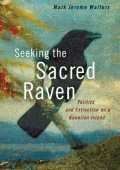
|
|
Extinct Birds Of New ZealandAlan Tennyson and P. Martinson
Te Papa Press
2005
"In New Zealand's lush rainforests, isolated from the outside world for 80 million years, many extraordinary birds evolved. They included the giant moa, the beautiful huia, and the largest eagle the earth has ever seen. Within a few hundred years, human settlement extinguished 58 unique and beautiful species. For the first time ever, this book brings these lost birds to life again. In rich colour, celebrated painter Paul Martinson depicts each bird in its original habitat. Te Papa palaeontologist Alan Tennyson provides detailed information on the birds as well as a compelling overview of their tragic extinction."
|
Buy from amazon.co.uk 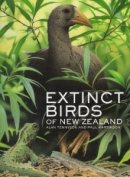
|
|
How the Earthquake Bird Got its Name and Other Tales of an Unbalanced NatureH. H. Shugart
Yale University Press
2005
"Although people have been altering earth's landscapes to some extent for tens of thousands of years, humankind today is causing massive changes to the planet. Such widespread environmental change is accompanied by accelerating rates of species extinction. In this book, noted ecologist H. H. Shugart presents important ecological concepts through entertaining animal parables. He tells the stories of particular birds and mammals - the packrat, ivory-billed woodpecker, penguin, dingo, European rabbit, and others. Shugart explores past environmental change, discusses the non-existence of a "balance of Nature", and documents how human alterations have affected plants, soils, and animals. He looks with hope toward a future in which thoughtful people learn and use ecological science to protect the landscapes upon which terrestrial creatures depend."
|
Buy from amazon.co.uk 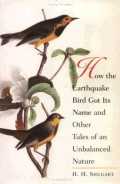
|
|
No Turning Back: The Life and Death of Animal SpeciesRichard Ellis
HarperCollins
2004
"A noted naturalist's fascinating inquiry into the life and death of animal species."
|
Buy from amazon.co.uk 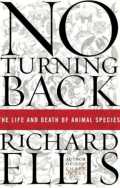
|
|
Extinct BirdsErrol Fuller
Oxford University Press
Revised edition
2002
"In historic times many species have been hastened to extinction through human actions, inadvertent or deliberate. In the case of the Hawaiian rail, Fuller writes in this catalogue of birds that have disappeared since 1600, the introduction of alien species such as the mongoose, domestic cat and rat is likely to blame. Rats, too, killed off the Lord Howe Island white-eye when a ship accidentally grounded there in 1918. The Carolina parakeet disappeared a few years later, owing, perhaps, to the destruction of its forest habitat and its beautiful plumage, highly prized by hunters. Mosquitoes carried on other ships felled many other island species. And so on."
|
Buy from amazon.co.uk 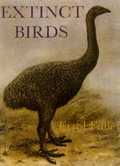
|
|
Evolutionary Ecology of Birds: Life Histories, Mating Systems and ExtinctionPeter Bennett and Ian P.F. Owens
Oxford Series in Ecology & Evolution
Oxford University Press
2002
"Birds show bewildering diversity in their life histories, mating systems and risk of extinction. Why do albatrosses delay reproduction for the first 12 years of their life while zebra finches breed in their first year? Why are fairy-wrens so sexually promiscuous while swans show lifelong monogamy? Why are over a quarter of parrot species threatened with global extinction while woodpeckers and cuckoos remain secure? Some of these topics are classic problems in natural and sexual selection, while others have arisen in the last decade, such as variation in genetic mating systems or extinction risk. Birds offer a unique opportunity for investigating these questions because they are exceptionally well-studied in the wild. By employing phylogenetic comparative methods and a database of up to 3,000 species, the authors identify the ecological and evolutionary basis of many of these intriguing questions. They also highlight remaining puzzles and identify a series of challenges for future investigation. This is the most comprehensive reappraisal of avian diversity since David Lack's classic "Ecological Adaptions for Breeding in Birds". It is also the most extensive application of modern comparative methods yet undertaken. This novel approach demonstrates how an evolutionary perspective can reveal the general ecological processes that underpin contemporary avian diversity on a global scale." Contents: Comparative biology of birds; Comparative methods; Natural selection and diversity in life histories; Diversity among living species; Patterns of covariation between life history traits; Ecological basis of life history and diversity; Further problems; Sexual selection and diversity in mating system; Variation in mating systems and sexual dimorphism; Ecological basis of mating system diversity; Ecological basis of sexual dimorphism; Further problems; Birth and death of bird species; Variation in extinction risk and species richness; Explaining variation and extinction risk; Explaining variation in species richness; Further problems; Conclusions.
|
Buy from amazon.co.uk 
|
|
A Gap in Nature: Discovering the World's Extinct AnimalsTim Flannery and Peter Schouten
William Heinemann
2001
"An evocative and beautifully illustrated commemoration of the animals we have lost from the planet over the last five hundred years."
|
Buy from amazon.co.uk 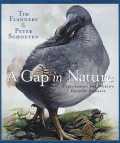
|
|
ExtinctAnton Gill and Alex West
Channel Four Books
2001
This book was published in conjunction with a 6 part TV series which recreated with animatronics and computer modeling the lives of the dodo, sabre-toothed tiger, great auk, Tasmanian tiger, Irish elk and woolly mammoth. The book describes the lives and extinction of these species and provides some information about the making of the series." Contents: Introduction; Columbian Mammoth; The Concept; Sabre-toothed Tiger; Animatronics; Irish Elk; Locations; Dodo; Backplates; Great Auk; Computer Modelling; Tasmanian Tiger; Computer Animation; Bibliography.
|
Buy from amazon.co.uk 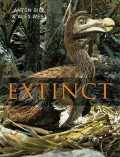
|
|
Hope is the Thing with Feathers: A Personal Chronicle of Vanished Birds Christopher Cokinos
Jeremy P. Tarcher / Warner Books
2000
"Even readers with no special interest in birds will be caught up in this marvelous book, a deeply moving cautionary tale about how we have systematically diminished the planet. In recounting the histories of six extinct North American birds, along with stories of the people who killed them off and those who tried to save them, Cokinos, a professor of English at Kansas State University, transforms each extinction into a deeply disturbing tragedy - both for the species itself, and for human civilization. Relentless, wanton hunting, more than ecosystem pressures, obliterated Cokinos's feathered protagonists, including the Carolina Parakeet, which once colored the skies with its green, yellow and reddish-orange plumage; the hardy Passenger Pigeon, flying for hours at a time in endless flocks before it vanished around 1900; the exquisite Labrador Duck; and the Heath Hen, daily fare for the Pilgrims, a holdout on Martha's Vineyard until 1932. Cokinos seamlessly weaves together priceless anecdotes, historical detective work, birders' reports, natural histories of the vanished species and his travel notes ranging from the Louisiana bayous to the steep-cliffed Bird Rock islets in the St. Lawrence Gulf, once the nesting ground of the extinct Great Auk."
|
Buy from amazon.co.uk 
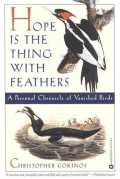
|
|
Extinction RatesEditors: John H. Lawton and Robert M. May
Oxford University Press
1995
"This book provides a more wide-ranging and data-driven treatment of present and likely future rates of extinction than any text currently available. It is directed broadly at senior undergraduates, postgraduate students and research workers in the fields of ecology, conservation biology and the environmental sciences. The authors highlight apparent differences in extinction rates among taxonomic groups and places, aiming to identify unresolved issues and important questions." Contents: Preface; Assessing extinction rates; Extinctions in the fossil record; Constancy and change of life in the sea; Insect faunas in ice age environments: why so little extinction?; Bird extinctions in the Central Pacific; Extinctions in Mediterranean areas; Recent past and future extinctions in birds; Rates and patterns of extinction among British invertebrates; Assessing the risk of plant extinction due to pollinator and disperser failure; Population dynamic principles; Estimating extinction from molecular phylogenies; Biological models for monitoring species decline: the construction and use of databases; Classification of species and its role in conservation planning; The scale of the human enterprise and biodiversity loss.
|
Buy from amazon.co.uk 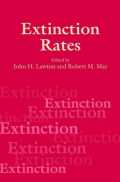
|
|
Extinct and Endangered Birds in the Collections of the Natural History MuseumA.G. Knox
British Ornithologists' Club
1994
|
Buy from amazon.co.uk |
|
Birds in Jeopardy: Imperiled and Extinct Birds of the United States and CanadaPaul R. Ehrlich, David S. Dobkin, and Darryl Wheye
Stanford University Press
1992
"As the human population skyrockets and the toxic impact of human society spreads, the natural habitats of birds degrade and diminish and the bird populations decline. Two hundred years ago, when the United States and Canada were home to less than 5 million people, they were also home to some 650 species of birds. Today, more than 280 million people live there, and 33 bird species have already been driven to extinction and well over 150 are in danger of extinction in all or parts of their range. This book, organized and written by the authors of The Birder's Handbook, and enriched by 191 strikingly beautiful color paintings illustrating all of the birds treated, is the first concise, authoritative review of the status of the birds currently imperiled in the United States and Canada - those that are federally listed as Endangered or Threatened and those that are listed by the National Audubon Society as suffering local or regional or widespread decline. It also treats the birds that have been driven to extinction in the past two centuries, since the stories of their somber fates can help us learn how to save the other birds that are in jeopardy."
|
Buy from amazon.co.uk 
|
|
Extinct BirdsErrol Fuller
Viking / Rainbird
1987
|
Buy from amazon.co.uk 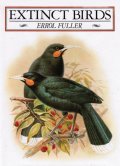
|
|
The Auk, the Dodo, and the Oryx: Vanished and Vanishing CreaturesRobert Silverberg
Thomas Cromwell
1967
|
Buy from amazon.co.uk 
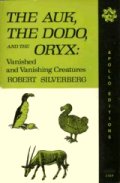
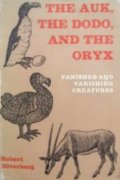
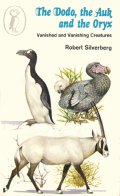
|
|
Extinct and Vanishing Birds of the WorldJ.C. Greenway
American Committee for International Wild Life Protection
1958
Reprinted by Dover Publications in 1967.
"Describes the physical characteristics, and habitats of extinct or threatened bird species and discusses man's role in their disappearance."
|
 |
|
The Heath Hen
Alfred O. Gross
Boston Society of Natural History
1928
|
 |
|
Extinct BirdsWalter Rothschild
Illustrations: John Gerrard Keulemans, George Edward Lodge, Henrik Grönvold, Frederick William Frohawk, and Joseph Smit
Hutchinson & Co
1907
From the preface: "When I decided to read a paper before the Ornithological Congress of 1905 on Extinct and Vanishing Birds, I found it necessary to illustrate my paper by a number of drawings. These drawings roused special interest among those who listened to my lecture, and I was asked by many if I could not see my way to publish the lecture and drawings, in book form, as these plates were far too numerous for the proceedings of the Congress. After some hesitation I determined to do this, greatly owing to the persuasion of the late Dr. Paul Leverkuhn. The preparation of a book required considerably more research than the lecture, and therefore my readers will find, in the following pages, a totally different account to that in the lecture, as well as corrections and numerous additions. The lecture itself has been published in the " Proceedings of the IVth International Ornithological Congress." I wish to thank very heartily all those of my ornithological friends, who have kindly helped me with the loan of specimens or otherwise, and especially Dr. H. O. Forbes, Dr. Scharff, Professor Dr. K. Lampert, Dr. O. Finsch, Professor Dr. A. Koenig, Dr. Kerbert, Mr. Fleming, Dr. von Lorenz, and others."
|
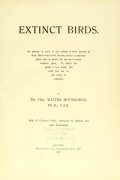
 |
|
Lost And Vanishing BirdsBeing A Record Of Some Remarkable Extinct Species And A Plea For Some Threatened FormsCharles Dixon
Illustrations: Charles Whymper
John MacQueen
1898
From the preface: "One of the saddest features of civilisation is the disappearance of so many beautiful and curious creatures from this world of ours. From all parts of the earth the same story comes; and we now seem to be within measurable distance of a time when wrecks and remnants of once compact and indigenous assemblages of organisms will be all that remain to us, and such a thing as a complete fauna will be unknown. This is not only a crime, but the violation of a sacred trust which we hold for posterity. Civilisation has already ground away under its merciless heel most of the faunal facies of Europe; Asia fares but little better, and is fast being reduced to the same state ; Africa is being rapidly depleted of all its most curious and striking forms of animal life; Australasia is a wretched object lesson of civilised man's exterminating progress ; whilst North America has already lost some of its ancient types, and is fast losing the remainder: South America alone retains its prehistoric fauna in greatest completeness, although even here the sad work of extermination has commenced. Birds have suffered severely in this general spoliation, and their extermination and persecution furnish material for some of the saddest chapters in the annals of ornithology. In the present volume an effort has been made not only to focus in a popular form our knowledge of the species we have lost and are still likely to lose, but to excite a greater interest in the protection of birds, particularly in those species, at home and abroad, that are more or less threatened with extermination at the present time."
|

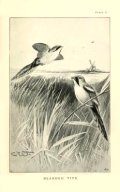
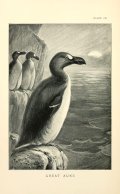
|
|